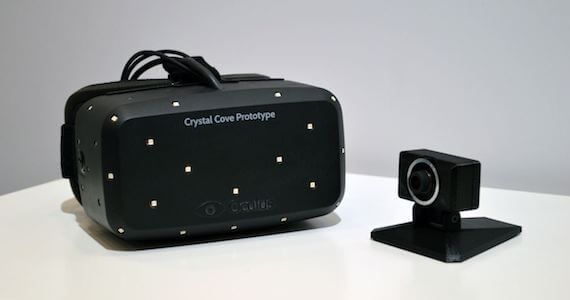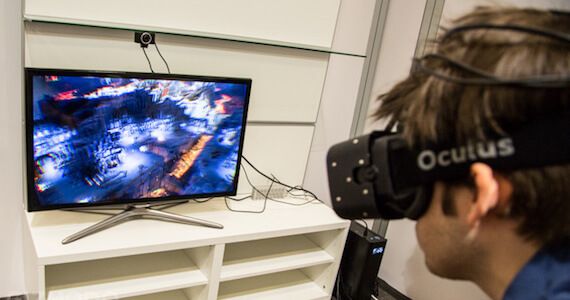As expected, the Oculus team was out in full force at CES 2014, ready to introduce the world to the latest Oculus Rift prototype. And much like past iterations of the VR headset, this latest update boasts some exciting new additions.
Dubbed the Crystal Cove, the newest Oculus Rift prototype has two new and surprising features: a low persistence OLED display and a motion tracking system. Both will push the VR headset over the edge as far as functionality are concerned, and will, more importantly, make the device even more user-friendly.
While low persistence isn't a buzzword we hear all too often, it will make a huge difference for Oculus Rift users. With this new OLED display, the Oculus team will be able to keep motion blur and shudder to a minimum, further reducing any user discomfort.
"Our new OLED panel in the prototype switches in well under a millisecond, so it’s faster than any LCD monitor on the market … what we’re doing is we’re taking the image and flashing it on when it’s correct, and only keeping that on for a fraction of a millisecond and then turning it off and then going black until the next pulse."
As far as the display's resolution, Oculus wasn't ready to let that cat out of the bag just yet. Certainly this is a step up from the Oculus Rift HD, but it's not clear how much of a step up it is.
The other big addition for the Crystal Cove is a new motion tracking system that uses a secondary peripheral and a series of IR dots on the VR headset. Basically, the system will function similar to an IR tracker for flight or space sims by tracking the dots' movement on the headset. The system will be packaged in with the Oculus Rift when it hits store shelves, and it will reportedly not significantly impact the headset's final price tag.
From a functionality perspective the motion tracking system will give users the ability to move their head in 3D space. In more concrete terms, the system gives users an extra three degrees of movement.
To better illustrate this new addition, the demo on-hand at CES 2014 features a virtual game board and table rendered in Unreal Engine 4. As part of the demo, users can move their head closer to the game board and see the "pieces" from a variety of angles, all without moving from their seat.
After a tremendous showing at E3 2013, no one would blame the Oculus team for shipping the headset they had on display last summer. But, as the Oculus team has shown time and time again, they are committed to building a device that has dozens of practical applications, that is functional, and that is a precise as it can be. Both these new additions are proof that the Oculus team, which has grown substantially in recent months, isn't willing to settle.
Ultimately, the Oculus has the potential to revolutionize more than just gaming, and the team is constantly improving the headset. How far Oculus' reach will go is unclear at this point, but if both NASA and Ford are testing out the Oculus then they are clearly on to something.
What do you think of the new Crystal Cove prototype? How would you like to see the Oculus team further improve the headset?
-


